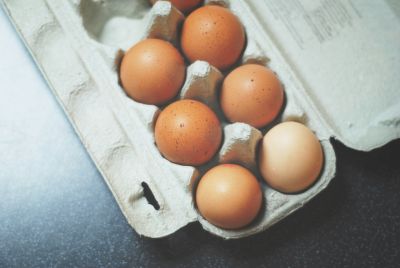Protective Goo Inside Bones Prevents Shattering Under Pressure

Protective "goo" has been discovered inside bones that prevent them from shattering when put under pressure.
The chemical citrate is mixed with water to create a viscous fluid that then gets trapped between the tiny crystals that form our bones, researchers at Cambridge's Department of Chemistry have found.
This fluid allows enough movement between the crystals to make bones flexible, preventing them from shattering as an inbuilt shock absorber.
Published in the Proceedings of the National Academy of Sciences, researchers discovered the goo through a combination of Nuclear magnetic resonance spectroscopy, X-ray diffraction, imaging and molecular modelling to uncover the citrate layers inside bone.
According to the team, their findings suggest there needs to be a huge shift in focus among those studying brittle bone diseases such as osteoporosis, as a lack of goo might be the root cause of these sorts of diseases.
Study leader Melinda Duer said: "Bone mineral was thought to be closely related to this substance called hydroxyapatite. But what we've shown is that a large part of bone mineral – possibly as much as half of it in fact – is made up of this goo, where citrate is binding like a gel between mineral crystals.
"This nano-scopic layering of citrate fluid and mineral crystals in bone means that the crystals stay in flat, plate-like shapes that have the facility to slide with respect to each other. Without citrate, all crystals in bone mineral would collapse together, become one big crystal and shatter.
"If we want to cure osteoporosis, we need to figure out how to stop the bigger holes forming in the protein matrix."
Study leader Melinda Duer
"It's this layered structure that's been missing from our knowledge, and we can now see that without it you're stuffed."
Duer said citrate has four arms that can easily bond to calcium. This means the molecule can hold the mineral crystals together. As well as preventing them from fusing, the citrate also traps the water that provides bone flexibility. "Without citrate, water would just flow straight through these gaps," she said.
Bone tissue has a protein mesh with holes where the calcium can be deposited. In healthy bone tissue, holes are very small so citrate cannot escape, leaving it trapped between the crystals.
Over time, the protein mesh is not repaired as well, leading to progressively larger holes. This causes citrate fluid to escape, meaning crystals fuse together.
"In the bigger holes in damaged tissue, pure chemistry takes over. Pretty much the moment calcium and phosphate touch, they form a solid. You end up with these expanding clumps of brittle crystal, with water and citrate relegated to the outside of them," Duer said.
"In terms of chemistry, that solid clump of mineral is the most stable structure. Biomechanically, however, it's hopeless – as soon as you stand on it, it shatters. If we want to cure osteoporosis, we need to figure out how to stop the bigger holes forming in the protein matrix."
© Copyright IBTimes 2025. All rights reserved.






















